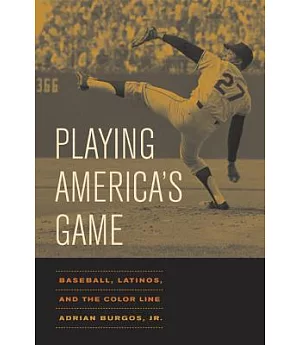Although largely ignored by historians of both baseball in general and the Negro leagues in particular, Latinos have been a significant presence in organized baseball from the beginning. In
this benchmark study on Latinos and professional baseball from the 1880s to the present, Adrian Burgos tells a compelling story of the men who negotiated the color line at every turn--passing
as "Spanish" in the major leagues or seeking respect and acceptance in the Negro leagues.
Burgos draws on archival materials from the U.S., Cuba, and Puerto Rico, as well as Spanish- and English-language publications and interviews with Negro league and major league players. He
demonstrates how the manipulation of racial distinctions that allowed management to recruit and sign Latino players provided a template for Brooklyn Dodgers' general manager Branch Rickey when
he initiated the dismantling of the color line by signing Jackie Robinson in 1947. Burgos's extensive examination of Latino participation before and after Robinson's debut documents the ways in
which inclusion did not signify equality and shows how notions of racialized difference have persisted for darker-skinned Latinos like Orestes ("Minnie") Mi簽oso, Roberto Clemente, and Sammy
Sosa.





















